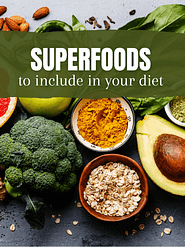
High blood pressure can be managed naturally through lifestyle changes and healthy habits.In this article, we’ll explore 10 effective ways to control high blood pressure without meditation.
Controlling your blood pressure is crucial for maintaining overall health and preventing serious conditions such as heart disease and stroke. While many people focus on adopting healthy habits, it’s equally important to identify and eliminate habits that can negatively impact your blood pressure. Here are ten habits you should skip to help keep your blood pressure in check.
1. Skipping Exercise

Regular physical activity is vital for maintaining healthy blood pressure. Sedentary behavior can lead to weight gain and increased blood pressure. Aim for at least 150 minutes of moderate exercise per week to keep your cardiovascular system strong and your blood pressure in a healthy range.
2. Overconsumption of Salt
Excessive salt intake is one of the leading causes of high blood pressure. Salt causes your body to retain water, which increases blood volume and, consequently, blood pressure.

Try to limit your daily salt intake to less than 2,300 milligrams, and ideally around 1,500 milligrams.
3. Smoking
Smoking damages your blood vessels and leads to atherosclerosis, a condition characterized by hardened arteries. This can significantly raise your blood pressure and increase the risk of heart disease. Quitting smoking is one of the best steps you can take for your cardiovascular health.

4. Excessive Alcohol Consumption
Reducing alcohol consumption is necessary for managing blood pressure and maintaining overall health
Choose Alcohol-Free Days
- Plan Ahead: Designate certain days of the week as alcohol-free.
- Gradual Reduction: Gradually increase the number of alcohol-free days.
5. Poor Sleep Habits
Sleep is vital for overall health, including maintaining healthy blood pressure levels. Chronic sleep deprivation can lead to hypertension. you should get 7–9 hours of sleep.

Chronic stress can contribute to high blood pressure. Stress management techniques such as meditation, deep breathing exercises, and regular physical activity can help keep your stress levels in check and your blood pressure stable.
7. Poor Diet Choices
A diet high in processed foods, sugars, and unhealthy fats can lead to high blood pressure. Instead, focus on a balanced diet rich in fruits, vegetables, whole grains, lean proteins, and healthy fats like those found in nuts and olive oil.

8. Ignoring Weight Gain
Excess weight puts additional strain on your heart and blood vessels, leading to increased blood pressure. Maintaining a healthy weight through diet and exercise is crucial for blood pressure management.
Why Weight Gain Matters for Blood Pressure
- Increased Strain on the Heart: Extra weight requires the heart to work harder to pump blood, leading to higher blood pressure.
- Higher Risk of Hypertension: Obesity is a major risk factor for developing high blood pressure.
- Increased Risk of Chronic Diseases: Weight gain can lead to diabetes, cardiovascular diseases, and other health problems that further complicate blood pressure management.

9. Caffeine Overload
While moderate caffeine consumption is generally safe for most people, excessive intake can cause a temporary spike in blood pressure. Monitor your caffeine intake and try to limit it to a moderate amount.

How Caffeine Affects Blood Pressure
- Vasoconstriction: Caffeine causes blood vessels to narrow, which can temporarily increase blood pressure.
- Adrenaline Release: Caffeine stimulates the adrenal glands to release more adrenaline, leading to a faster heart rate and higher blood pressure.
- Individual Sensitivity: Some individuals are more sensitive to caffeine and may experience a more pronounced increase in blood pressure.
Managing Caffeine Consumption
- Know Your Limits
- Moderate Intake: Aim to consume no more than 400 milligrams of caffeine per day (about four 8-ounce cups of brewed coffee).
- Monitor Sensitivity: Pay attention to how your body responds to caffeine and adjust your intake accordingly.
- Track Your Caffeine Intake
- Keep a Log: Record your daily caffeine consumption to identify patterns and monitor your intake.
- Read Labels: Be aware of the caffeine content in various foods and beverages, including coffee, tea, energy drinks, soft drinks, and certain medications.
- Choose Low-Caffeine Alternatives
- Decaffeinated Options: Opt for decaffeinated coffee and tea.
- Herbal Teas: Enjoy herbal teas that are naturally caffeine-free.
- Water and Infused Water: Stay hydrated with water or water infused with fruits and herbs.
- Gradually Reduce Caffeine
- Slow Reduction: Gradually decrease your caffeine intake over several weeks to avoid withdrawal symptoms such as headaches and irritability.
- Smaller Portions: Reduce the size of your caffeinated beverages or dilute them with water or milk.
- Timing Matters
- Limit Late-Day Consumption: Avoid caffeine in the late afternoon and evening to prevent sleep disturbances, which can affect blood pressure.
- Balanced Spacing: Spread out your caffeine intake throughout the day rather than consuming large amounts at once.
- Understand Hidden Sources
- Check Medications: Some over-the-counter medications contain caffeine.
- Chocolate and Snacks: Be mindful of caffeine in chocolate and certain snacks.
- Stay Informed
- Research: Keep informed about new research and recommendations regarding caffeine and its effects on health.
- Consult a Healthcare Provider: Discuss your caffeine consumption with a healthcare professional, especially if you have high blood pressure or other health concerns.
10. Neglecting Regular Health Check-ups
Regular health check-ups allow for early detection and management of high blood pressure. Make sure to visit your healthcare provider regularly to monitor your blood pressure and make necessary lifestyle adjustments.
By avoiding these habits, you can take significant steps toward maintaining healthy blood pressure and improving your overall health. Remember, small lifestyle changes can make a big difference in your blood pressure control.
Healthy Diet for Blood Pressure
Maintaining a healthy diet is a cornerstone in managing and preventing high blood pressure (hypertension). The right dietary choices can help lower your blood pressure, improve heart health, and reduce the risk of related diseases. Here’s a comprehensive guide to a healthy diet for blood pressure control.
1. Embrace the DASH Diet
The DASH (Dietary Approaches to Stop Hypertension) diet is specifically designed to help manage blood pressure. It emphasizes the consumption of:
- Fruits and vegetables: focus on 4-5 servings of each per day. These foods contain vitamins, minerals, and fiber.
- Whole Grains: Include whole grains such as brown rice, oatmeal, and whole wheat bread in your diet.
- Lean proteins: choose lean proteins like fish, poultry, and legumes. Limit red meat intake.
- Low-Fat Dairy: Choose low-fat or fat-free dairy products to reduce saturated fat intake.
- Nuts, Seeds, and Legumes: These provide healthy fats and proteins. Consume these in moderation, about 4-5 servings per week.
2. Reduce Sodium Intake
High sodium intake is closely linked to high blood pressure. To manage sodium levels:
- Limit Processed Foods: Processed and packaged foods often contain high amounts of sodium.
- Read Food Labels: Check for sodium content on labels and choose low-sodium options.
- Cook at Home: Prepare meals at home using fresh ingredients to control the amount of salt added.
- Flavor with Herbs and Spices: Use herbs, spices, and lemon juice instead of salt to add flavor to your dishes.
3. Increase Potassium Intake
Potassium helps balance the effects of sodium and reduces blood pressure. Include potassium-rich foods in your diet:
- Fruits: Bananas, oranges, and avocados.
- Vegetables: Sweet potatoes, spinach, and tomatoes.
- Legumes: Beans and lentils.
- Dairy: Low-fat milk and yogurt.
4. Incorporate Healthy Fats
Healthy fats, especially omega-3 fatty acids, can help lower blood pressure and improve heart health:
- Fish: intake fatty fish like salmon, mackerel, and sardines.
- Nuts and Seeds: Flaxseeds, chia seeds, and walnuts.
- Olive Oil: Use extra virgin olive oil as a healthier alternative to butter and other oils.
5. Limit Added Sugars and Refined Carbs
high intake of added sugars and refined carbohydrates can contribute to weight gain and high blood pressure:
- Avoid Sugary Beverages: Limit sodas, sweetened teas, and juices.
- Choose Whole Foods: choose whole fruits instead of fruit juices.
- Select Whole Grains: Choose whole grains over refined grains like white bread and pasta.
6. Stay Hydrated
Proper hydration is crucial for maintaining healthy blood pressure:
- Drink Plenty of Water: Drink at least 8 glasses of water a day.
- Limit Caffeine and Alcohol: Excessive caffeine and alcohol can raise blood pressure.
7. Mind Your Portions
Controlling portion sizes can help maintain a healthy weight, which is vital for blood pressure management.
- Use smaller plates. This approach can help manage portion sizes.
- Read Serving Sizes: Pay attention to serving sizes on food labels.
- Avoid Second Helpings: Try to resist going back for seconds.
8. Plan and Prepare Meals
Planning and preparing meals can ensure a balanced diet:
- Meal Prep: Prepare meals in advance to avoid unhealthy food choices.
- Balanced Meals: Ensure each meal includes a balance of proteins, carbohydrates, and fats.
- Healthy Snacks: Keep healthy snacks like fruits, nuts, and yogurt on hand.
9. Limit Alcohol Consumption
Moderate alcohol consumption can have health benefits, but excessive drinking can raise blood pressure:
- Moderation is Key: Limit alcohol to one drink per day for women and two for men.
10. Regular Monitoring
Regularly monitoring your diet and blood pressure can help you stay on track:
- Keep a Food Diary: Track your food intake to identify areas for improvement.
- Monitor Blood Pressure: Regularly check your blood pressure at home or with your healthcare provider.






















